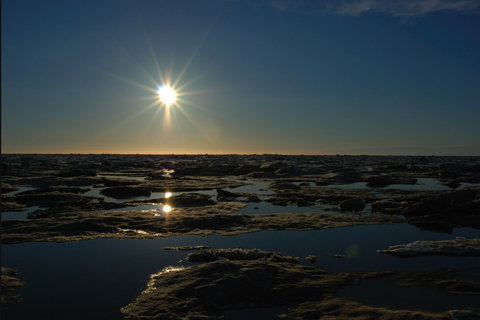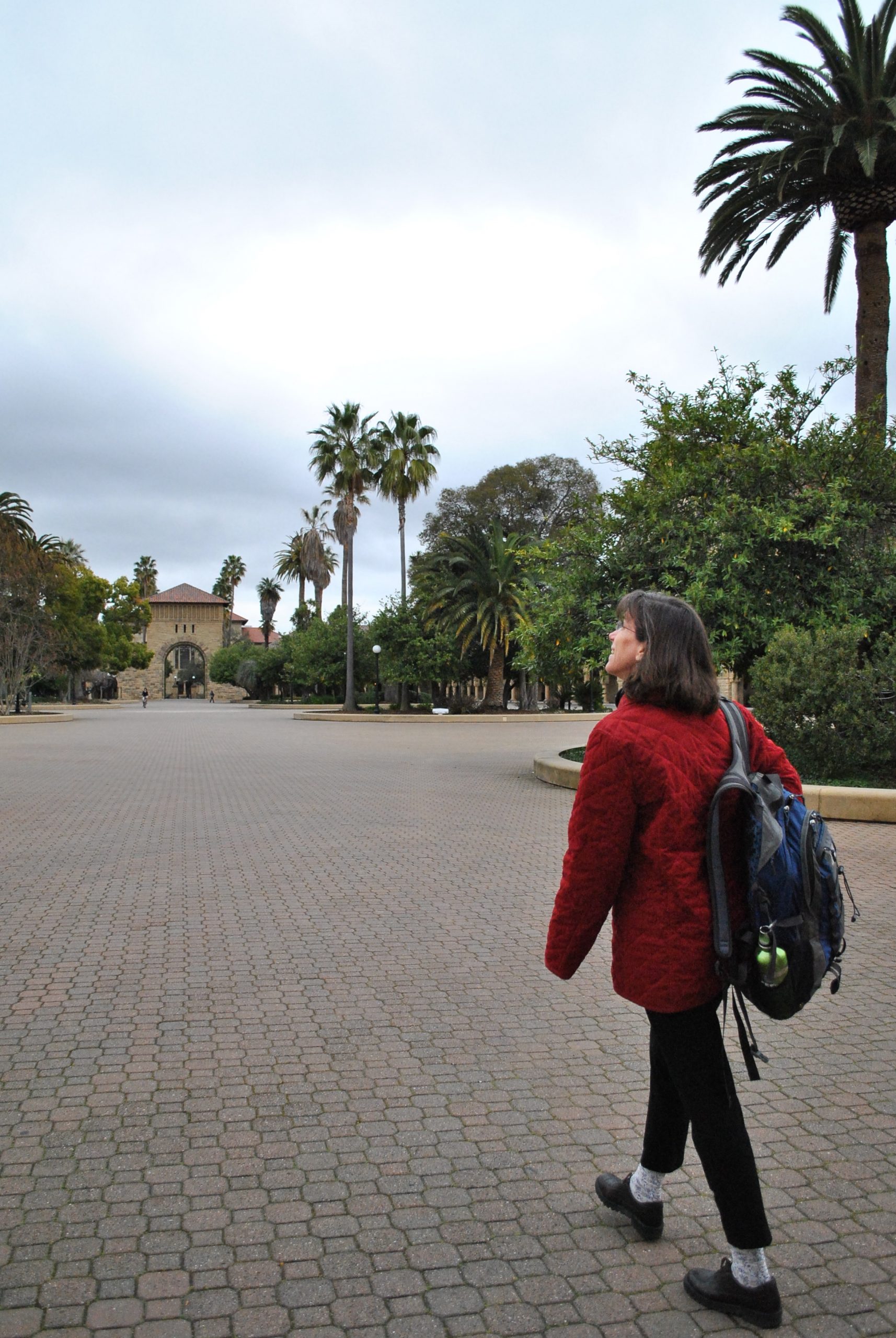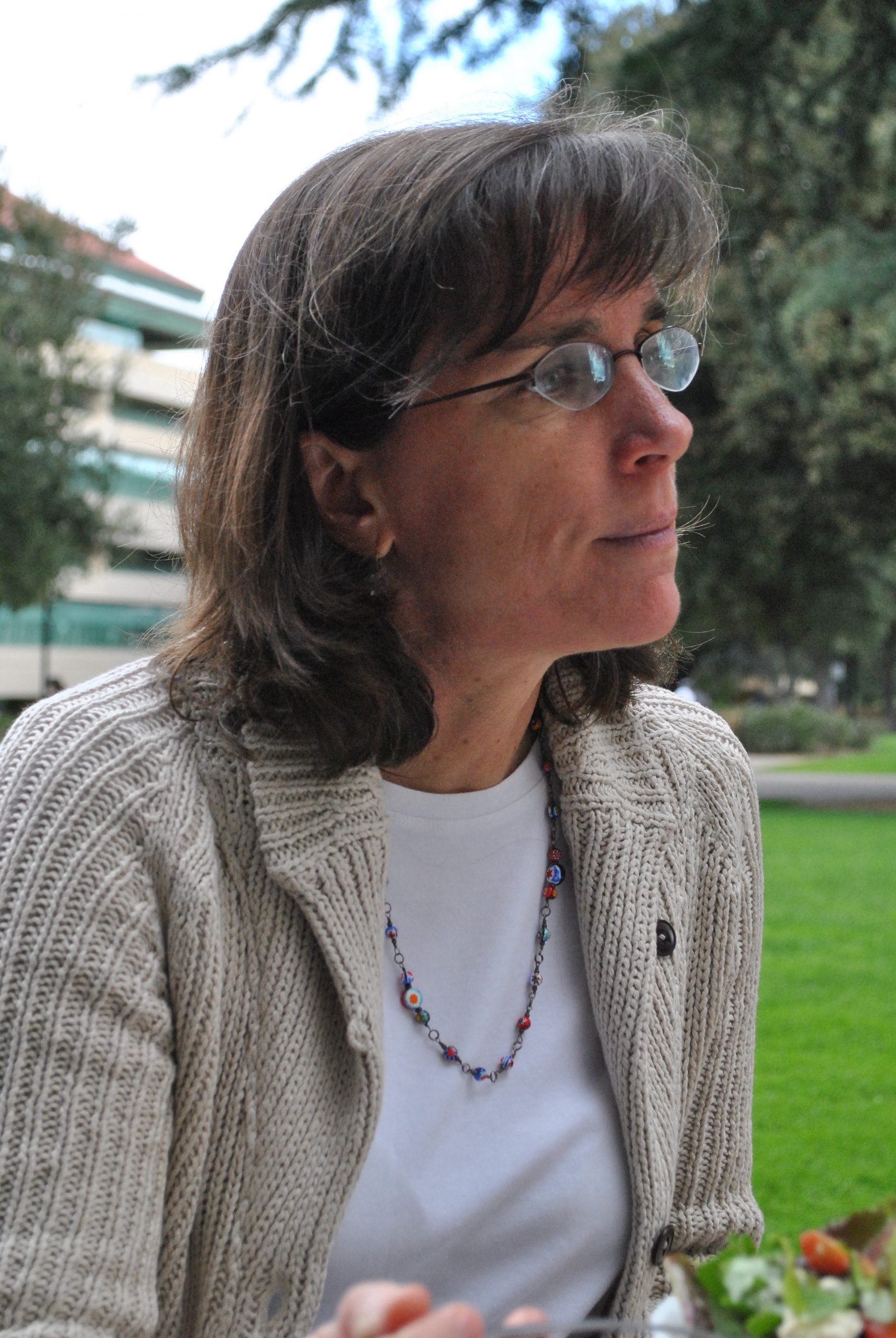Out of the field, but still experimenting
When Mary Ruckelshaus, managing director for the Natural Capital Project, began her career as a biologist more than 20 years ago she would arrive at Washington’s San Juan Islands in the middle of the night. Lighting the world with a massive headlamp and armed with buckets of gear, she’d venture out into the sulfur-scented murk of the low tide to see what she could discover.
But last week, when she flew from her home in Seattle to visit Stanford for a fast-moving two days, the ocean was only an abstract thought. Ruckelshaus doesn’t get outside much any more during the workday—or at least, not unless she’s dashing across campus from one meeting to another. Rather, she was hustling back and forth between two offices. Fighting a cough, she headed from fundraising meetings to lunchtime planning sessions and face-to-face meetings with the staff she normally communicates with over the phone.
“I don’t think I ever would have pictured what I’m doing now when I was young,” Ruckelshaus reflected over an early morning cup of green tea. This was our first meeting in person, after communicating over phone and email since this project began. We had a little while to take in caffeine and discuss the Natural Capital Project before she trekked half a mile across campus to a fundraising meeting.
Ruckelshaus left her 12-year job as a research scientist with the National Oceanic and Atmospheric Association just last September, and like the more than 20 scientists and economists associated with the project, she’s still figuring out how to translate her background as a researcher to working with academic and governmental institutions and non-profits.

In a way, her journey mirrors the young project’s path. The Natural Capital Project began about five years ago, Ruckelshaus says, as “a little kernel of science” seeking to feed the needs of its partner non-profits and academic institutions. Everyone was struggling to make the abstract idea of ecosystem services into something pragmatic, a decision-making tool that could be applied in the real world. Since then, the project has grown in size and fame as the concept of ecosystems services has gained currency in environmental and economic circles alike. Opportunities constantly arise for the project to become even bigger.
“With each new project we take on,” says Ruckelshaus, “we could add more staff.” Already, the number of pilot projects and test sites has made NatCap a hemispheric venture, with plenty of potential partners interested in expanding it further still.
But in doing so, she says, there’s a risk of losing touch with the project’s primary goal — to be a spark of pure scientific inspiration for its more applied, policy-minded partner institutions. If they’re not careful, Ruckelshaus muses, the Natural Capital Project could grow into one of the NGO’s it aims to support.
***
Perhaps like many scientists, Ruckelshaus found her career drifting away from the fieldwork she loved the higher she rose. “I got into science because I loved being outside,” Ruckelshaus says. ” I wanted to understand how nature works.” She grew up in Maryland — not too much nature there, she says – and always went on hikes and picnics, and reveled in family trips to North Carolina’s Outer Banks, where she could explore the wild dunes. A seasoned scientist and administrator now, she still has the energetic look of a young girl who would defy her parents by traipsing through the woods in her best clothes.
Now, first-hand encounters with nature must be shoe-horned into a busy life–she and her husband, a Stanford graduate like Mary who teaches biology at a Seattle community college, drag their teenagers out backpacking or skiing when they can.
Still, joining the Natural Capital Project was an easy decision, she says. At NOAA, she’d already left her position as a research scientist to manage the Ecosystem Science program She was also already working with old Stanford and University of Washington acquaintances to help the Natural Capital Project develop its marine initiative. So when Natural Capital co-founder, Nature Conservancy chief scientist and Ruckelshaus’s post-doctoral advisor Peter Kareiva pulled her aside at a meeting and asked if she wanted to help manage Natural Capital, she found herself saying yes to a new job. “For the first time in eight years, I didn’t immediately think “no” when asked to do something new,” Ruckelshaus laughs. Though she knew the job would take her further still from working in the field or the lab, Ruckelshaus says the mix of “fascinating new science combined with application” was too enticing to pass up. Besides, she says, “It’s still about protecting nature.”
***
At a lunch meeting last week with Heather Tallis, the Stanford-based biologist and lead scientist for Natural Capital’s terrestrial and freshwater programs, the conversation moved, like a powerful camera lens, from panoramic issues of people and management to the minutiae of the program’s software and science.
Laughing while they awaited their food outside Stanford’s electrical engineering cafe, Tallis and Ruckelshaus talked about how a colleague had recently wowed the president of Colombia with the Natural Capital Project’s ecosystem modeling tool, InVEST.
As the food arrived, they settled down at a sunny table to begin chipping away at a page-long list of items. Forks and pens waved as they talked about InVEST trainings in Colombia and China, and who would conduct them, whether they should take on more, and how they should collaborate with a partner at the University of Minnesota.
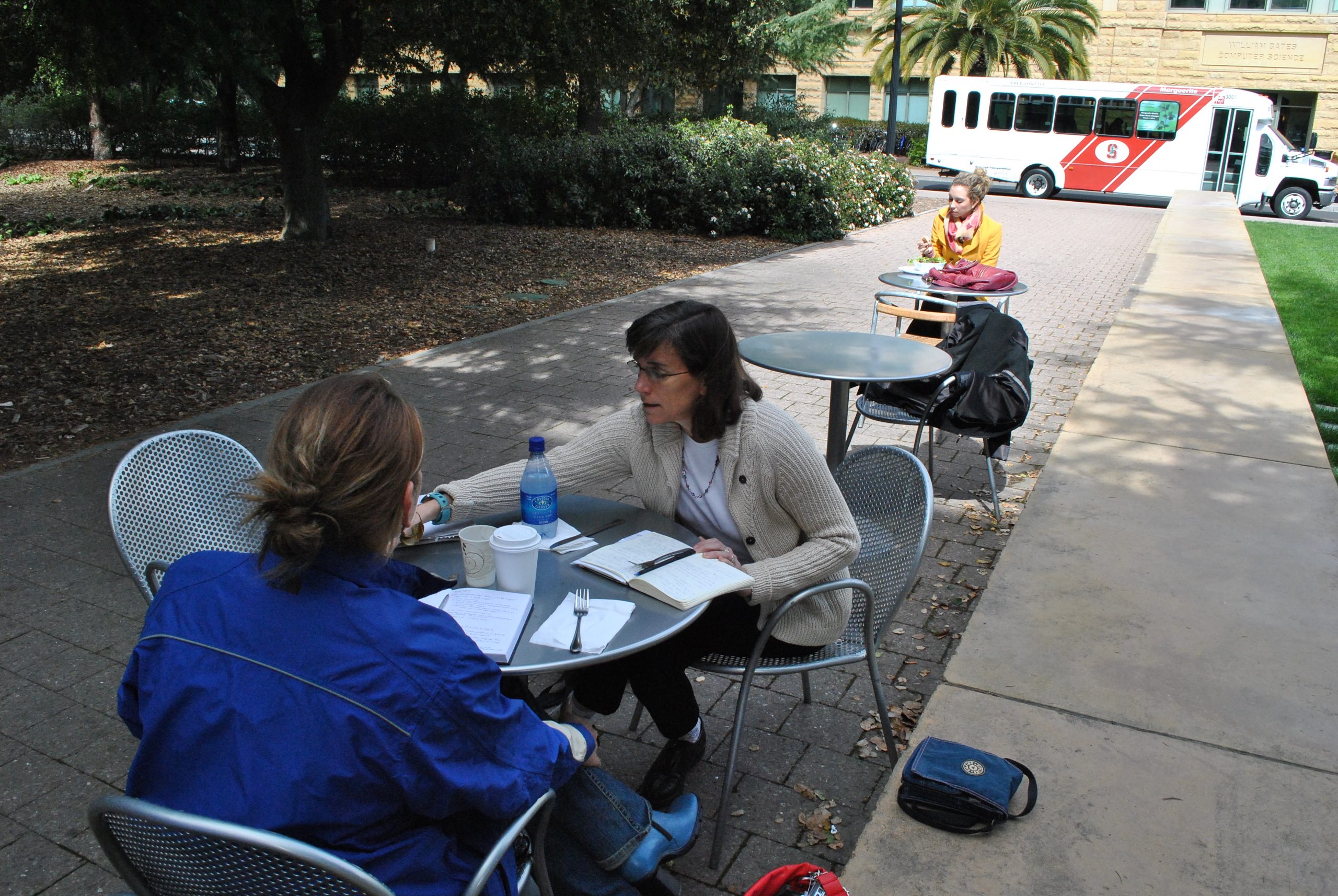
Gradually, they grew more intent, focusing in on gritty details. With less laughter and finer gesticulations, they discussed how to incorporate more specific data on water yield — how much water a watershed provides — and quality into the InVEST ecosystem model. They were trying make the tool more useful for assessing water funds, or payment agreements for communities to ensure clean water. In places like Indonesia, this is becoming an important tool. From there, they talked about how the science would apply to new projects, like one to help the Department of Defense determine how to manage its land and water.
When I left them, bound for an afternoon lecture, they were hashing out how the number of “pixels” (units of measurement in InVEST) informed what they could learn about how much food an area can produce.
In other words, they were deep in the heart of the science, where both of them, and the project, first started.
Photo 1 via Flickr / MarmotChaser
Who is Science, Upstream?
 JAMIE HANSEN has written for Sierra Magazine, the High Country News, and Birders’ World. She’s pursuing a master’s degree in journalism at Stanford, hoping to tie together two passions: a keen interest in the natural world and communicating with broad audiences. She has a bachelor’s degree in English from Oberlin College, but fell in love with biology during her last semester.
JAMIE HANSEN has written for Sierra Magazine, the High Country News, and Birders’ World. She’s pursuing a master’s degree in journalism at Stanford, hoping to tie together two passions: a keen interest in the natural world and communicating with broad audiences. She has a bachelor’s degree in English from Oberlin College, but fell in love with biology during her last semester.
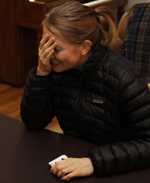 JULIA JAMES is a master’s candidate in Journalism at Stanford University. She often writes about issues relating to human and environmental health. When not chained to a computer, she likes to climb rocks and chase Frisbees. She holds a B.S. in geological and environmental sciences (also from Stanford) and lives in Palo Alto with six housemates and five chickens.
JULIA JAMES is a master’s candidate in Journalism at Stanford University. She often writes about issues relating to human and environmental health. When not chained to a computer, she likes to climb rocks and chase Frisbees. She holds a B.S. in geological and environmental sciences (also from Stanford) and lives in Palo Alto with six housemates and five chickens.
